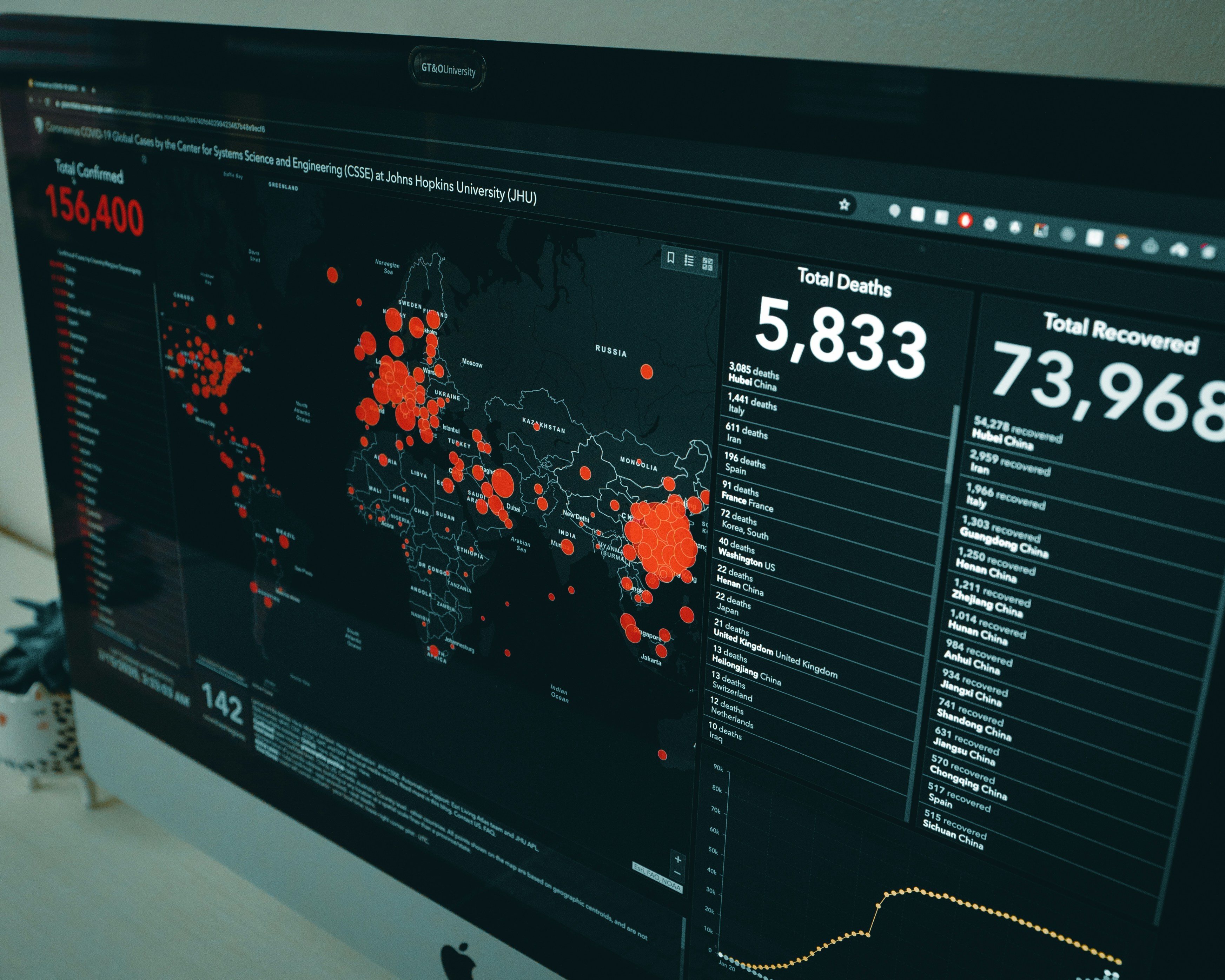1 min read
How to Assess 3rd vs 4th Party Risk Management
Here are the key takeaways from this blog: Third- & Fourth-Party Risk Is a Growing Threat: Breaches increasingly originate from vendors—not your own...

Here are the key takeaways from this blog:
Get Early Access to AI-Powered Vendor Security Reviews
While these partnerships offer efficiency and scalability, they also introduce significant risk, especially when vendors have access to sensitive systems or data, which is where vendor risk assessments come in!
A vendor risk assessment is the process of identifying and evaluating risks posed by third-party vendors that access, process, store, or impact your organization’s data, systems, or operations. Also known as a third-party vendor risk assessment or vendor management risk assessment, this process helps organizations make informed decisions about who they do business with—and under what terms.
Vendor risk assessments are grounded in a range of regulatory expectations, especially for financial institutions. Frameworks like FDIC, OCC, FFIEC CAT, NIST SP 800-37, and ISO 27001 emphasize the need for due diligence, ongoing monitoring, and risk-based tiering of vendors.
These assessments aren’t just a one-time checkbox. They’re typically conducted:
The output usually includes:
Third-party vendors have become one of the biggest security blind spots—and threat actors know it. Recent supply-chain breaches like MOVEit, SolarWinds, and Kaseya have caused widespread data exposure, operational disruption, and multi-million-dollar fines. These incidents underscore that even if your internal controls are strong, a single vendor vulnerability can expose your entire ecosystem.
Regulators have responded accordingly. Guidance from FFIEC, NCUA and OCC increasingly requires financial institutions to perform risk-based vendor due diligence both before and after onboarding. It’s no longer enough to assess once and forget—it’s a continuous process.
Beyond regulatory pressure, poor vendor security can:
Not all vendor risks are created equal—and understanding the differences is key to an effective assessment. The nature and severity of risk often depend on the type of services a vendor provides and how closely they interact with your systems, data, and operations.
Cybersecurity remains one of the most immediate concerns, as vendors can become entry points for data breaches, ransomware attacks, or exploitation of insecure APIs. Even a well-secured internal environment can be compromised through a vulnerable third party.
Closely related is the issue of data privacy and legal risk. Vendors that handle sensitive information—such as personally identifiable information (PII), payment card data (PCI), or protected health information (PHI)—must comply with strict privacy laws like GDPR or CCPA. A misstep on their part can result in regulatory penalties and loss of customer trust.
Then there’s compliance and regulatory risk, which arises when vendors fail to meet industry standards such as SOX, GLBA, or HIPAA. These gaps don’t just impact the vendor—they create downstream accountability for your institution as well.
Operational resilience is another critical area. If a vendor lacks robust business continuity or disaster recovery plans, their outages can become your outages—potentially disrupting customer services or internal workflows.
From a financial standpoint, vendor solvency and strategic risk also need consideration. An over-reliant or financially unstable vendor may be more vulnerable to market shifts, potentially impacting their ability to deliver critical services over the long term.
Lastly, reputational and ESG risks are becoming increasingly important. Vendors that fall short in ethical sourcing, environmental sustainability, or responsible AI practices can tarnish your organization’s reputation by association—particularly in the eyes of customers, investors, and regulators.
Understanding these various risk dimensions is essential to building a vendor risk management program that’s both proactive and practical.
A vendor risk assessment isn’t just a one-time task—it’s a recurring process that should be fully integrated into your organization’s broader risk management lifecycle. As your vendor ecosystem evolves, so do the risks, making it essential to reassess regularly and in response to specific events. Common trigger points include:
Ultimately, if a vendor has access to sensitive systems, handles regulated data, or supports critical operations, the question isn’t whether to assess them—it’s how deeply and how often.
Here’s a simplified yet effective 7-step process for conducting vendor risk assessments:
Successfully managing vendor risk takes more than just checking boxes—it requires a thoughtful, repeatable process.
One of the most effective ways to streamline assessments is by standardizing your approach. Leveraging widely accepted templates helps ensure consistency across vendors, reduces redundant work, and makes it easier to compare responses over time. This also improves credibility with auditors and regulators, who are familiar with these frameworks.
Automation can further reduce the administrative burden. Tools that handle evidence collection, track deadlines, and send automated reminders to vendors can save time and reduce human error. They also create a reliable audit trail, which is invaluable during an internal review or regulatory exam.
Equally important is tying risk ratings to actual business impact. Many organizations fall into the trap of assigning scores based solely on technical metrics. Instead, assessments should reflect how a vendor’s failure would affect your operations, customers, or compliance posture. This business-aligned approach helps prioritize resources and communicate risk more effectively to leadership.
Of course, even mature programs can stumble into common pitfalls. One frequent issue is that is often overlooked issue is fourth-party risk—the risk introduced by your vendors’ own vendors. If you’re relying on a third party that outsources key functions, you need to understand and evaluate that extended chain of trust.
Lastly, organizations frequently forget about sunset vendors. These are providers you no longer work with but who may still retain access to sensitive data or systems. Without proper offboarding and data destruction processes, these vendors can pose lingering risks that fall through the cracks.
Avoiding these missteps—and adopting a more strategic, structured approach—can go a long way in building a vendor risk program that’s both efficient and resilient.
When evaluating vendor risk tools, prioritize platforms that reduce manual effort and streamline compliance across your environment. Look for capabilities like:
Ultimately, the right vendor risk assessment solution should reduce friction, enhance oversight, and grow with your program - a reason why many financial institutions look to Rivials' team of security experts.
The vendor risk landscape is evolving rapidly, with new technologies and regulatory pressures reshaping how organizations approach assessments. Here’s what’s on the horizon:
Our platform streamlines vendor risk assessments with AI-powered tools that deliver thorough evaluations in just one click, saving you time and ensuring consistency. Continuous monitoring keeps you alerted to any changes in vendor security posture before they become bigger issues.
By simplifying documentation and keeping you updated on emerging risks, it allows your team to focus on making informed decisions rather than chasing paperwork, a reason why so many organizations lean on our platform to support their vendor risk programs.
Get Early Access to AI-Powered Vendor Security Reviews

1 min read
Here are the key takeaways from this blog: Third- & Fourth-Party Risk Is a Growing Threat: Breaches increasingly originate from vendors—not your own...

Here are the key takeaways from this blog:

Here are the key takeaways from this blog: Vendor trust isn't security—verify everything. Embed cybersecurity requirements into contracts, conduct...